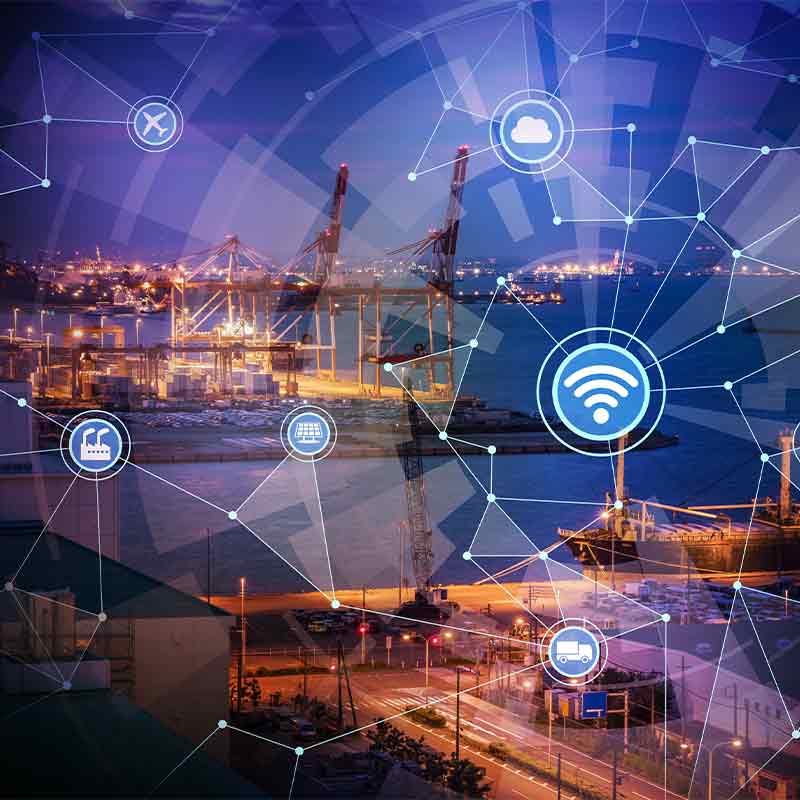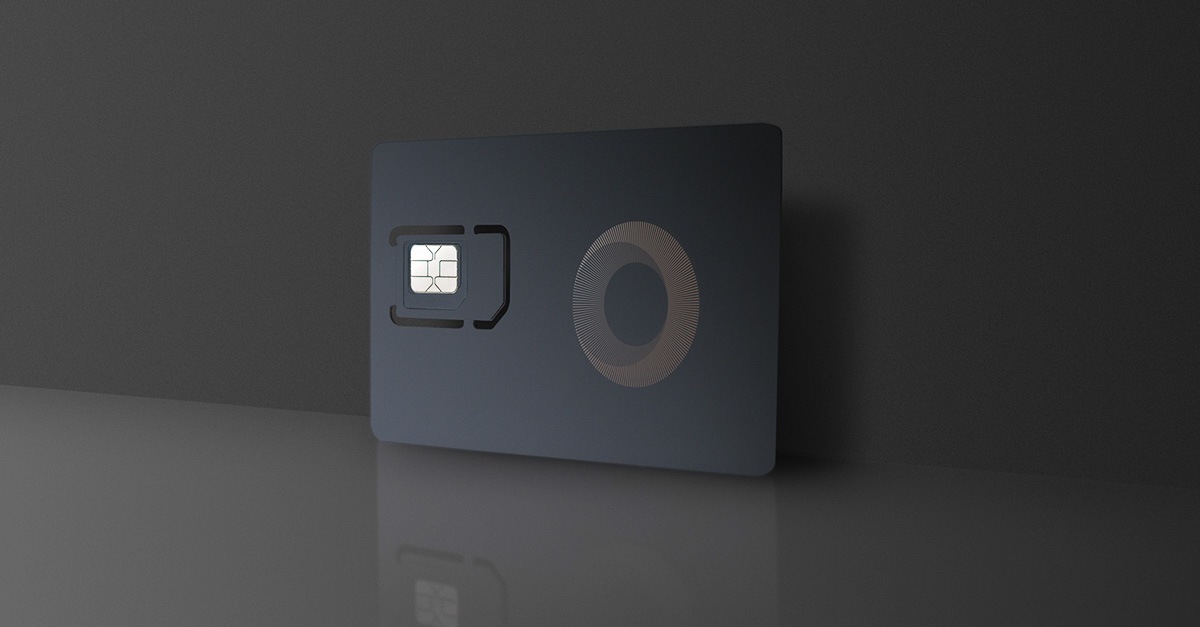IoT Connectivity Provider Management of Connectivity in IoT
The Internet of Things (IoT) represents a community of interconnected units, allowing them to speak and share knowledge with each other. This interconnectedness depends heavily on varied types of connectivity to function effectively. Understanding how IoT connectivity works can illuminate the mechanisms behind this transformative technology - Cloud Connectivity In IoT.
At the core of IoT connectivity lies a mixture of hardware, software program, and communication protocols. Devices, often outfitted with sensors, are designed to gather information from their environment. These sensors can range from simple temperature gauges to superior cameras able to performing image recognition. Once data is collected, the system wants a approach to relay this information elsewhere, whether to an area server or a cloud platform.
Wireless communication has emerged as a dominant mode of connectivity. For many IoT functions, that is extra practical than wired options due to simpler deployment and suppleness. Technologies such as Wi-Fi, Zigbee, Bluetooth, and cellular networks play very important roles in enabling units to connect with the web or to one another. Each of these technologies provides distinctive advantages relying on the particular use case.
IoT Connectivity Technologies Connectivity for IoT Products
Wi-Fi is prevalent in city environments for connecting gadgets to the web. Its excessive bandwidth allows for large information transfers, making it ideal for applications that require real-time streaming or heavy data loads. However, it may not be the most effective resolution in distant areas the place dependable web entry could be inconsistent - Mobile Data Connectivity For IoT.
Zigbee and Z-Wave, then again, are tailored for low-power gadgets that communicate small portions of knowledge over quick distances. They are notably helpful in smart houses, the place units like gentle bulbs, locks, and thermostats work together seamlessly. The low energy consumption is a vital factor, permitting gadgets to run for extended intervals on small batteries.

Bluetooth is one other widely used technology, especially for personal devices. It offers a straightforward method for connecting devices like smartphones and wearables. With the advent of Bluetooth Low Energy (BLE), it's now possible for devices to keep up a connection while consuming minimal power, which is essential for battery-operated IoT devices.
Cellular connectivity extends the reach of IoT units significantly. Technologies like 4G and the emerging 5G networks enable devices to connect even in areas devoid of Wi-Fi or different native options. This capability is especially helpful for functions like vehicle monitoring, the place mobility and a secure connection are crucial. However, cellular options can incur higher operational prices compared to different strategies.
Industrial IoT Connectivity Growth of Connected IoT Devices
LoRaWAN (Long Range Wide Area Network) supplies an alternate for long-range connections with low power necessities. This know-how allows gadgets to speak over a number of kilometers whereas using very little energy. It is especially fitted to agricultural monitoring, environmental sensing, and smart city functions, where gadgets could additionally be spread out over large areas.
Once information is transmitted, it sometimes goes to cloud servers for processing and storage. Cloud computing offers scalable sources and complicated analytics capabilities. This environment enables real-time analytics, machine studying algorithms, and the potential for integrating artificial intelligence into IoT techniques. Processed knowledge can then be despatched again to end-users through varied interfaces, similar to cell apps or net dashboards.
The integration of security measures is crucial in IoT connectivity. Since IoT units usually transmit sensitive data, they will turn out to be prime targets for cyberattacks. Encryption protocols are necessary to guard data throughout transmission. Furthermore, device authentication helps ensure that communications are real and safe. Manufacturers and developers should prioritize safety to build belief in IoT systems.
Wireless IoT Connectivity Modern Solutions for IoT Connectivity
Interoperability poses one other problem in IoT connectivity. As countless units come from completely different manufacturers, they may use numerous communication protocols, which might lead to compatibility issues. Standardization efforts, similar to these from the Internet Engineering Task Force (IETF), assist mitigate these considerations. Open standards and frameworks purpose to create an ecosystem during which diverse gadgets check my site can seamlessly talk with one another, enhancing functionality and consumer expertise.
Edge computing is remodeling how data is processed in IoT methods. By transferring knowledge processing nearer to the source, latency is significantly decreased, and bandwidth usage can be optimized. Edge units can analyze information in actual time, facilitating faster decision-making. This method is particularly advantageous in situations the place instant responses may be important, such as automated industrial systems or healthcare monitoring.
As IoT technology continues to evolve, innovations in connectivity will facilitate a surge in purposes in numerous sectors, including healthcare, agriculture, transportation, and smart cities. Healthcare, for example, employs IoT devices for remote patient monitoring, enabling healthcare providers to track vital signs in real time. Smart agriculture uses IoT sensors to monitor soil conditions, optimizing useful resource allocation and enhancing crop yields (Nb-IoT Connectivity).
IoT Connectivity Provider Simplified Global IoT Connectivity
In the smart transportation sector, traffic administration systems make the most of IoT connectivity to improve visitors flow, scale back congestion, and enhance security. Sensors put in on roads communicate information about vehicle speeds, enabling real-time adjustments to site visitors signals. This built-in approach can significantly enhance urban mobility and reduce environmental impacts.
In conclusion, understanding how IoT connectivity works uncovers the intricate web of technologies and protocols that make up this progressive ecosystem. The ability for units to speak and share knowledge varieties the foundation for numerous functions that enhance efficiency, security, and quality of life. As new connectivity technologies emerge and existing ones advance, the probabilities for IoT purposes will continue to increase, driving innovation and transforming numerous sectors.
- IoT connectivity depends on sensors and devices that gather information, which is then transmitted over varied networks to central hubs or cloud systems for processing and evaluation.
- Different communication protocols, corresponding to Wi-Fi, Bluetooth, Zigbee, and cellular networks, enable units to attach and talk based on their specific requirements and energy constraints.
- Edge computing performs a vital role in IoT connectivity by processing data near the supply, lowering latency and bandwidth consumption whereas enhancing real-time decision-making.
- Gateway devices serve as intermediaries, translating knowledge between numerous IoT gadgets and cloud platforms, thereby guaranteeing interoperability and system integration.
- The use of MQTT (Message Queuing Telemetry Transport) and CoAP (Constrained Application Protocol) enhances communication efficiency, particularly for devices with limited processing power and bandwidth.
- Security protocols, together with encryption and authentication strategies, are important to safeguard information because it travels by way of various networks, ensuring devices remain resistant to cyber threats.
- Wide Area Networks (WANs) and Low Power Wide Area Networks (LPWANs) are tailored specifically for IoT, enabling in depth coverage and supporting numerous units while consuming minimal power.
- Cloud platforms act as repositories for IoT knowledge, offering advanced analytics, machine learning capabilities, and storage solutions, enabling enterprises to derive actionable insights.
- Dynamic networking and self-healing capabilities make positive that IoT methods can adapt to modifications in the environment or network conditions, maintaining seamless connectivity.
- Interoperability standards are being developed collaboratively by industry consortia to enable a various vary of IoT gadgets to speak successfully, fostering a more integrated ecosystem.undefinedWhat is IoT connectivity?undefinedIoT connectivity refers back to the way devices and sensors are linked to the internet to gather and change information. This connectivity allows seamless communication between units, allowing them to act upon the information they obtain.

How do IoT devices communicate with every other?undefinedIoT units talk using numerous protocols and standards like Wi-Fi, Bluetooth, Zigbee, and cellular networks. These technologies allow units to ship and receive knowledge, facilitating real-time evaluation and decision-making.
Connectivity Technologies In IoT Common IoT Connectivity Technologies and Use Cases
What function does the cloud play in IoT connectivity?undefinedThe cloud acts as a centralized hub where knowledge from IoT units is saved, processed, and analyzed. It provides scalability and adaptability, permitting for environment friendly data management and quick access from multiple gadgets.
What are the security considerations related to IoT connectivity?undefinedCommon safety issues include unauthorized access, data breaches, and insecure units. Effective safety measures like encryption, common software program updates, and community segmentation are essential for protecting IoT systems.
Managed IoT Connectivity Services What Does IoT Connectivity Look Like?
How does IoT connectivity influence on a daily basis life?undefinedIoT connectivity enhances on a daily basis life by enabling smart house units, improving healthcare through remote monitoring, optimizing transportation systems, and facilitating environmental administration, resulting in elevated comfort and efficiency.
What are the main challenges of IoT connectivity?undefinedChallenges include network reliability, compatibility amongst completely different gadgets and protocols, look at this website knowledge privacy concerns, and the need for environment friendly energy management. Addressing these issues is essential for the widespread adoption of IoT technologies.
How are IoT gadgets powered?undefinedIoT gadgets could be powered through various means, together with batteries, energy over Ethernet (PoE), and solar energy. The choice is decided by the gadget's location and meant use, balancing power effectivity with operational continuity.
Nb-IoT Connectivity Growth of Usable IoT Satellites

What industries profit the most from IoT connectivity?undefinedIndustries such as healthcare, agriculture, manufacturing, and transportation are among the prime beneficiaries. IoT connectivity streamlines processes, enhances monitoring, and improves total productiveness in these sectors.
Can IoT connectivity work without the internet?undefinedYes, some IoT solutions can operate in local networks or offline modes, using technologies like mesh networks. However, with out web entry, the aptitude for distant monitoring and data evaluation is limited.